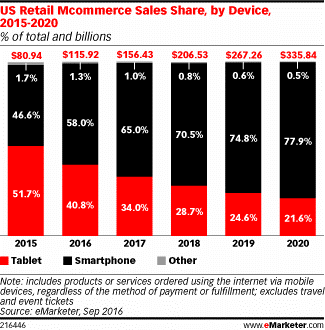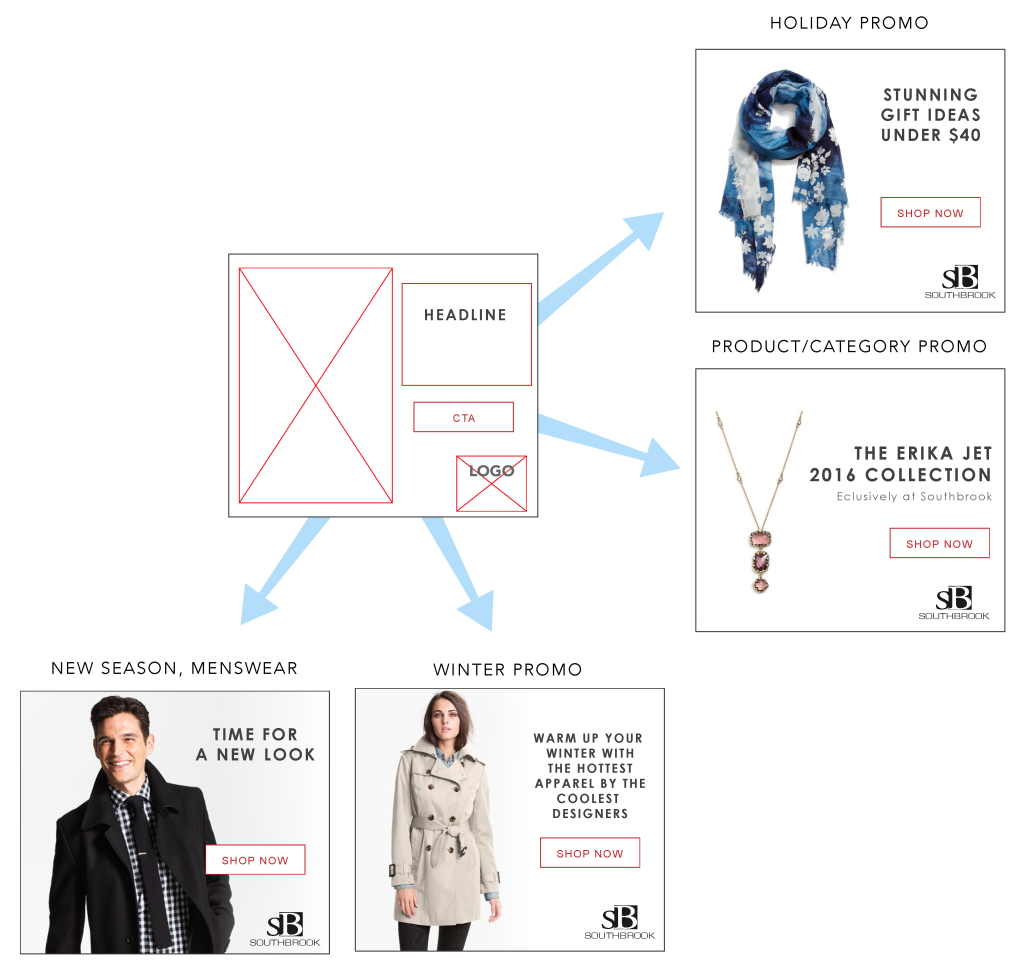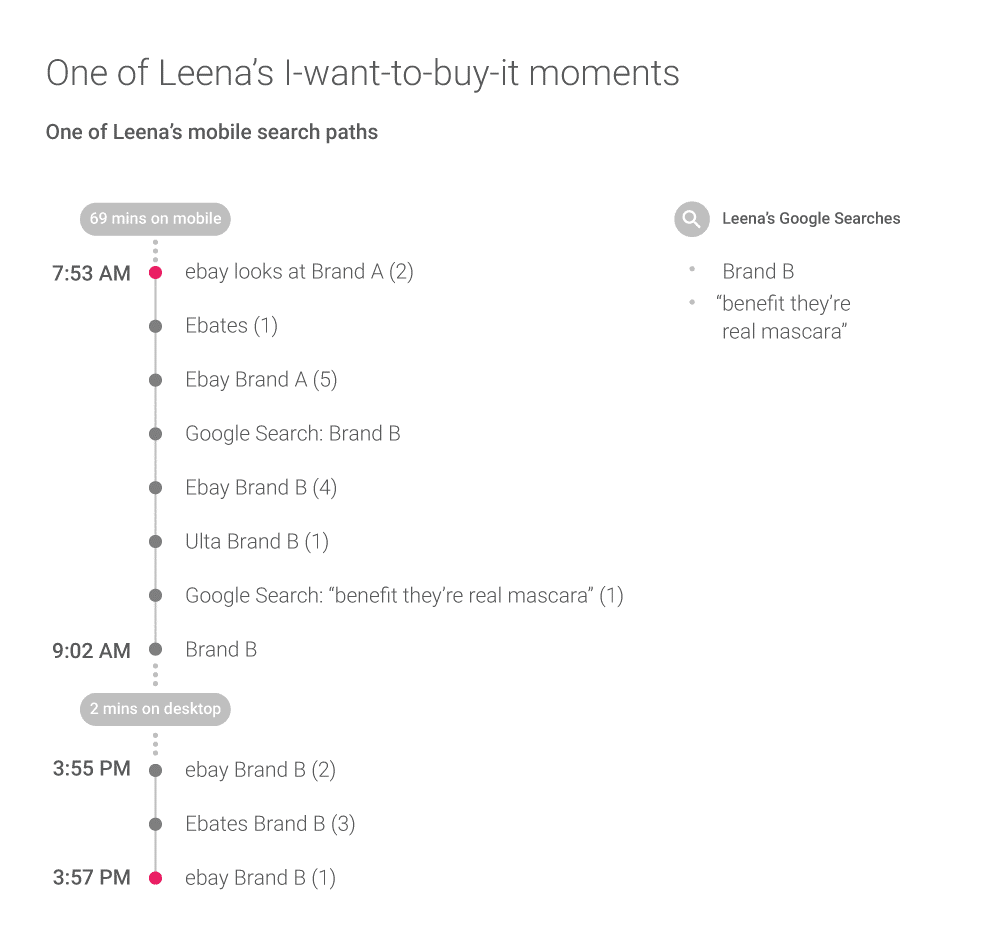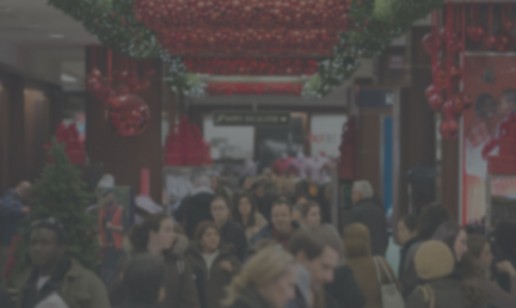Happy Holidays from ClearPier

As the holiday season approaches, we’d like to take this opportunity to wish you a happy holidays and wonderful new year!
Thank you for your continued support and for following our blog. If you’re not already doing so, remember to follow us on Facebook, Twitter, LinkedIn, or Instagram for instant updates.
Stay tuned for more exciting content on everything digital, performance, and programmatic as we head into 2017.
No matter what you’re celebrating this season, happy holidays!
Cheers,
The Team at ClearPier
Want to learn how ClearPier can help you?
Connect with our team at sales@clearpier.com
The Biggest Holiday Shopping Trends of 2016
Mobile a major factor in global
e-commerce sales this holiday season.
Did you know that worldwide retail e-commerce sales will climax at $1.9 trillion by the end of this year?
According to eMarketer, this year’s US holiday retail e-commerce is forecasted to grow 17% hitting $95 billion, and will represent nearly 11% of total holiday retail sales – the largest share of the pie, ever.

So, what are the biggest marketing trends we’re seeing as the holiday e-commerce season ramps up?
1. Sales growth driven by smartphones
Double-digit growth is expected all the way through 2020 when sales will hit $4 trillion. E-commerce is huge, especially during the holiday season and mobile is a driving factor of this growth.

Retailers are in fact embracing mobile and seeking to improve the user’s purchasing experience on mobile.
Improved user experiences, bigger screens, and easy, efficient, and convenient payment methods are likely the main reasons why sales are improving on smartphones.
But more improvement is required to motivate more mobile conversions.
Earlier this year, GfK on behalf of Facebook IQ ran a study of 2400 adults who used mobile phones, tablets, desktops or laptops to research or buy items from online stores over three months. Consumers bought across a range of categories including consumer electronics, clothing, home appliances, home goods, and beauty (AdWeek).
 Although 55% of participants chose to purchase on mobile because of the convenience factor, the study revealed there are significant challenges that still exist for mobile sales.
Although 55% of participants chose to purchase on mobile because of the convenience factor, the study revealed there are significant challenges that still exist for mobile sales.
70% of participating shoppers stated that mobile website and app experiences can still be improved, and that includes a more streamlined final payment process.
Privacy problems, the inconvenience of multi-screen sequential browsing issues, accidental clicks on small screens, and clunky check out processes were all concerns expressed even by mobile friendly consumers.
2. Local mobile search will rise
Multiple consumer touch points are important in the process towards a completed conversion. One of the biggest pros of having a brick and mortar store to service consumers is enabling clients to actually touch and feel a product – a critical, real world touch point.
Interestingly enough, prospective clients are doing so with products in store and on their screens, simultaneously. Mobile in-store searches are up by over 30% according to Google.
Shoppers are increasingly buying on their screens within stores, despite the checkout being so near.

Take me as an example, I’ve been to Ikea a lot this past month (like 5 times and we’re only halfway through the month). Each and every time, I’ve hopped on Ikea’s free WIFI on my iPhone and run some searches before adding items to my online cart.
In fact, Google tells us that 43% of mobile shoppers in consumer electronics have purchased products on their phones while looking at said products in the aisle.
With so much information available at their fingertips for digitally savvy shoppers always looking for deals, you can bet this trend will keep on growing well into 2017. For marketers, this means capitalizing on programmatic geolocation targeting capabilities.
3. Retailers are focusing on unique in-store experiences, supported by strong social media presence
The holidays is one of those times of years when delighting consumers isn’t just part of the spectacle, it’s a necessity.
Over the top window displays, mini-concerts, and special promotions are all part of pushing consumer desire to buy. A couple weeks ago the Hudson’s Bay in downtown Toronto had Mariah Carey perform as they unveiled their always well received holiday windows. The event generated a tonne of hype and free social media buzz produced by the audience in attendance.

Creating memorable experiences is a major retailer responsibility to curate demand, considering consumers know that there is always a deal happening somewhere.
Millennials in particular, drivers of the global economy, generally believe the experience is just as important as the product.
Retailers need to turn to technology to improve the already hectic holiday shopping experience if they hope to boost sales. Self-service technology like in-store kiosks to help with navigation or stock checks (e-catalogs), or express checkout services are all ways that retailers can engage consumers in store and win this holiday season.
Want to learn more? Connect with our team at sales@clearpier.com
4 Ways to Optimize Your Holiday Campaigns for Maximum ROI
From segmenting your data to using a CMP; consider the following.
Put away the pumpkin spice lattes, it’s nearly time to switch over to the egg nog. Every good marketer has at this point fully planned and scheduled their holiday marketing strategies. Campaigns are just about ready to launch. But of course, there is always room for improvements.
Before you launch those campaigns, consider the following 4 ways to optimize your performance campaigns for this holiday season.
- Target creatives according to segmented audience data
If you combine the power of compelling creatives with insightful audience data, you can target your audience more precisely and with relevancy. Consumers are much more inclined to engage with ads that are relevant to their needs. The more interruptive the ad, the more likely they’ll put the blinders on.
Let’s take the Amanda Foundation’s fantastic campaign which is a prime example of how useful segmented audience data can be for targeting.
Each of the advertiser’s creatives uses a shelter animal to promote adoptions. But the messaging is uniquely tailored to the audience based on known browsing behaviour/interests, and demographic data.
So if the viewer is a known foodie who loves trying new restaurants, delivering them creative number three would be perfect to inspire engagement.

- Consider using a Creative Management Platform
Creative management platforms (CMPs) are powerful design tools for the programmatic marketer. CMPs are less technical than Dynamic Creative Optimization tools (DCOs) but also allows designers to make large ad sets as well as small changes to individual creatives. CMPs often have pre-set creative templates that cuts down on design time and makes duplication and customization simple.
It’s a scalable creative production environment where you can create and iterate on only the best performers.

- Remember the importance of “Micro Moments” on mobile
According to Google, 76% of people who conduct a local search on their smartphone visit a business within 24 hours and 28% of those searches results in a purchase. A lot of research is in the pre-sale buyer journey and this will spike as we head into the holiday season.
Google’s series on “I-Want-to-Buy Moments” examined one shopper’s micro-moments (by way of searches, clicks and website visits) over the course of one month to understand how much and how digital research played a role in her purchasing decisions.
The study shows that there are over 1000 digital touch points over a single month leading up to the consumer’s purchase.

Google also shows us the breakdown of her mobile versus desktop search paths:
 So how can marketers win in these ‘micro-moments’?
So how can marketers win in these ‘micro-moments’?
Be there and be useful. Considering how much research goes into a consumer’s journey now a days, retargeting your ads is a good way to re-engage consumers with buying intent. Remember, although a lot consumers do their research on mobile, buying still happens mainly on desktop. Even upon checkout, marketers can reintroduce promotions, deals, and suggested products for upselling.
- Rotate your ads – or run dynamic creatives
Static banner ads are alright, if they’re well targeted. But banner blindness is indeed a real problem. Keep your visitors curious by rotating fresh creatives in to replace stale ones.
You can up your performance by employing dynamic html5 creatives as well. Why show case only one product, when you can highlight multiple? This is where using a CMP comes in particularly useful as these platforms are often equipped with dynamic creative templates where you simply have to plug in your raw assets.
Best Buy does a really good job at this. Get more out of your ad placement and do more to entice with fresh creatives.

So if you’re not already doing these four things to optimize your campaigns, now is the perfect time to start before the holiday mayhem begins.
Want to learn more? Connect with our team at sales@clearpier.com.


